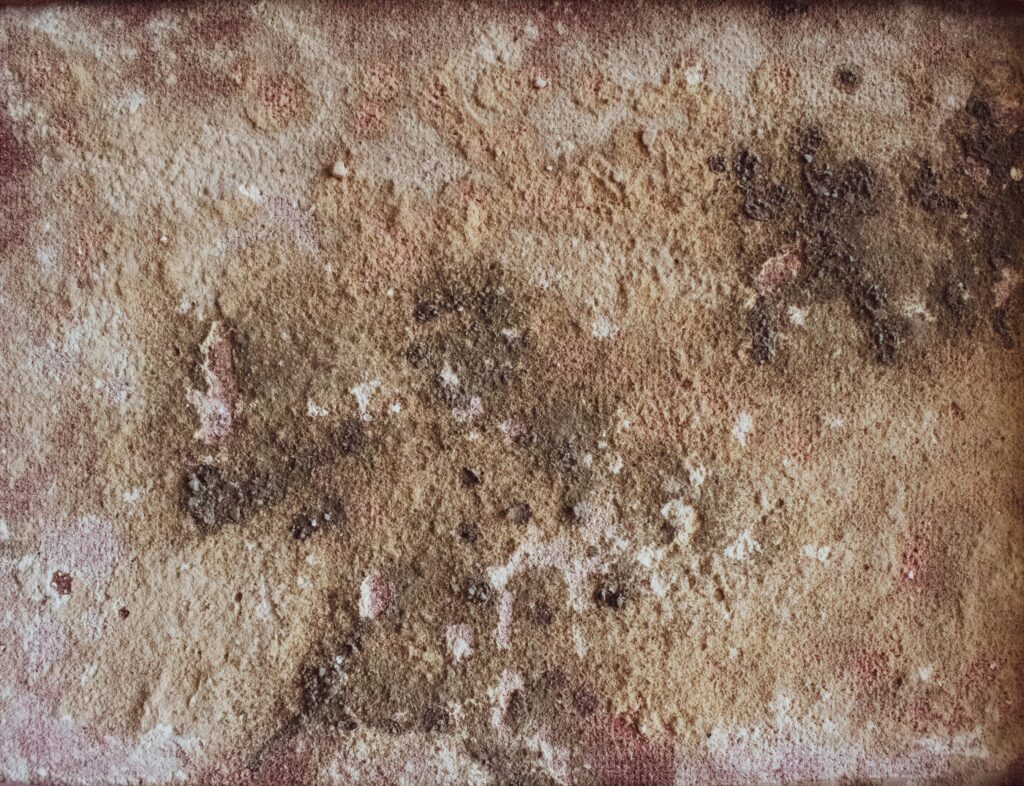5 min read
Attic mold is a dangerous problem that can often go unnoticed. Many homeowners only visit the attic for seasonal storage or maintenance, so mold can easily thrive in this space for a long time. Since it is hidden, it is essential to promptly detect and address attic mold to avoid potential health and safety hazards.
Below, we tackle everything you need to know about attic mold, including identifying the signs of mold growth, getting rid of mold in the attic, and preventive measures to safeguard your home against this stealthy danger. With the proper knowledge about attic mold remediation, you can protect your family, maintain your home’s longevity, and enjoy peace of mind.
How to Identify Attic Mold
Attic mold is a severe problem that can damage your home’s structure, pose health risks, and lead to poor indoor air quality. Here’s how to detect bacterial growth:
Visual Inspection
Conducting a thorough visual inspection is the first step to identifying mold in your attic. Mold can grow in numerous areas, but some common regions include:
- Roof sheathing
- Rafters
- Attic insulation
- Ventilation system
- Pipes and plumbing lines
During your visual inspection, you may encounter different types. They can appear fuzzy, powdery, or slimy in green, black, white, or blue shades. It may have an irregular pattern and can spread over the surface, appearing as spots or patches.
Smell Test
If you notice an earthy smell in your attic, it could indicate the presence of mold. Mold growth in your attic can produce a specific odor due to the release of microbial volatile organic compounds, which are byproducts of mold growth. A simple smell test can help you identify mold problems in their early stages. This, in turn, can assist you in taking the necessary steps for attic mold remediation before it escalates into a more significant problem.
How To Get Rid of Mold in Attic
It is crucial to tackle mold growth as soon as you notice it due to its dire consequences. Here are steps on how to remove mold from the attic:
- Assess the extent of the mold problem: The first step in mold remediation is to assess the mold’s impact on your attic. Make sure to look for any visible mold, as well as any musty odors.
- Prepare for mold removal: Before you begin removing mold from the attic, make sure to protect yourself with proper safety gear. Wear a mask, goggles, and gloves to protect against spores and potentially harmful chemicals.
- Remove contaminated items: Moldy items in the attic should be removed and properly disposed of. It is best to replace porous items such as insulation and wood as they can be difficult to clean thoroughly.
- Clean the moldy surfaces: Clean the mold with a mixture of water and detergent for non-porous surfaces or materials that cannot be removed. Do not use bleach, as it may exacerbate the problem by dissipating the odor. Instead, use a commercial mold remover designed for this purpose or an anti-fungal cleaner.
- Dry the area: Once the mold has been cleaned, it is crucial to dry the attic thoroughly. This will help prevent mold from growing back in the future.
- Monitor the area: Regularly inspect your attic for any signs of mold to catch any issues early on and make future remediation efforts more manageable.
- Consult professionals: Experts have the proper knowledge on how to get rid of mold in the attic. They also have the right tools to conduct the remediation safely and efficiently.
Preventative Measures To Avoid Mold Regrowth
Taking care of attic mold is only half the battle – ensuring that the problem doesn’t rear its ugly head again is equally essential. Once the attic mold remediation process is complete, it’s vital to implement preventative measures to avoid the conditions that promote mold growth.
Seal Any Leaks
Sealing leaks around your attic by cutting off one of its primary water sources is critical in inhibiting mold growth. Begin by inspecting the roof and looking for missing or damaged shingles. Any compromised areas should be addressed promptly to prevent water infiltration.
Improve Ventilation
Proper ventilation is essential in preventing mold growth. This is because it reduces the amount of moisture in the attic by allowing air to circulate effectively throughout your space. To ensure that your attic has sufficient intake and exhaust vents, which facilitate the proper flow of air, it is essential to consult a professional. This helps keep the temperature and moisture levels regulated, thus preventing the growth of mold.
Control Humidity Levels
High humidity can create a suitable environment for mold to grow. Therefore, it is crucial to maintain the ideal relative humidity level of 30% to 60%. One effective way to measure and regulate humidity in your attic is to use a hygrometer, which provides real-time insights into your attic’s humidity levels.
Trust the Experts at Restoration 1 for Professional Attic Mold Remediation
Learning how to remove mold from your attic is essential for maintaining a healthy home. However, attempting a DIY mold remediation project can be time-consuming and potentially dangerous if not carried out correctly. Therefore, it is always best to trust experienced professionals in mold removal.
Restoration 1 provides fast and reliable mold remediation services that ensure your attic is free from contamination. Our team of certified professionals know how to remove mold from your attic and has advanced training and equipment to handle any mold situation.
Contact us today.


